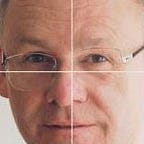Writing for Guitar and Piano — a dozen observations
Whenever I’ve played with a pianist, audiences have always commented on how well the combination works. This is surprising — we think of the piano as a large, loud instrument, and the guitar as somehow delicate, certainly not able to hold its own in the partnership in the way (for example) a bowed or wind instrument does in their respective and extensive duo repertoires. But with imagination and care it’s possible to write effectively and idiomatically for the two instruments in combination.
The following observations are all things that I’ve considered when combining the two instruments. Some or all of these can suggest the sorts of contrasts, oppositions and correspondences out of which a piece could be crafted.
1. The sound of both instruments is characterised by an attack and a decay — a slow decay for the piano, more rapid for the guitar. In both instruments the decay is quicker in the higher registers, particularly in the guitar.
2. Touch and speed of attack can shape a note on the piano, and resonance can be controlled by the pedal — nevertheless, the variety of attack and tone colour on the guitar is much, much greater. The different sounds of striking a string with thumb or finger, rest stroke (where the player follows-through the stroke, the fingertip coming to rest on the next string) or free stroke, the ability to pluck a string anywhere along its length, the subtle variations achieved by varying the angle of approach to the string, or the amount of flesh v. nail the player uses — these all before taking account special techniques: vibrato, harmonics, étouffe, various kinds of strumming.
3. Piano effects — plucking or striking the strings, damping the strings with one hand while playing the keyboard with another, preparing the piano in a variety of ways — all have the ability to bring the tonal ranges of the instruments into something more like equilibrium.
4. The piano’s range extends above and below that of the guitar. Use this fact with purpose, not accidentally. The modern piano’s lower register is very powerful — from (say) middle C upwards the piano is almost a different instrument. In this register, the guitar can support the piano (rather than vice-versa, which is what you might expect…).
5. The different volumes of the instruments: the piano has a much larger dynamic range at the loud end: both instruments are capable of playing almost inaudibly.
6. The piano is capable of considerable density of texture: adjacent tones and semitones can be sounded together readily, and sustained into each other using the pedal. The options for doing this on the guitar are much more limited. Remember that increasing density also means increasing volume (as true on the piano as on the harpsichord) unless you’re very explicit with respect to dynamic indications and the effect you desire.
7. The piano is capable of considerable transparency of texture. Pitches can be placed in dispersed registers, and sustained with the pedal, leaving plenty of space for the guitar to fill.
8. The guitar is capable of considerable transparency of texture. Pitches can be placed in dispersed registers, and — provided they’re carefully chosen, and with a judicious admixture of harmonics — can be sustained, leaving plenty of space for the piano to fill.
9. The piano is confined to the equal-tempered scale: notes on the guitar can be bent to produce microtones, and strings can be detuned.
10. Though the guitar sounds an octave lower than written, in practice it doesn’t sound like a “tenor” instrument. Against a light texture, lines in the middle and upper range are perfectly audible, possibly because of the richer and more complex harmonic content of the plucked string tone.
11. My own practice, and more recent way of thinking about harmony and texture, has been to base harmonic structure in the middle registers. This works well for piano with guitar, places both instruments on a much more even footing, and avoids the guitar being swamped by the resonant and overtone-rich low registers in the piano.
12. Don’t forget that the piano is the instrument of Chopin and Debussy, as well as Beethoven and Liszt.
